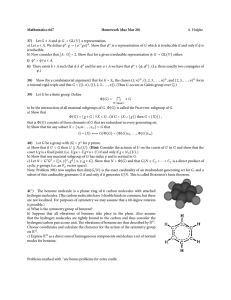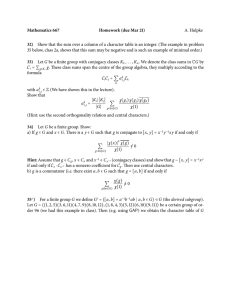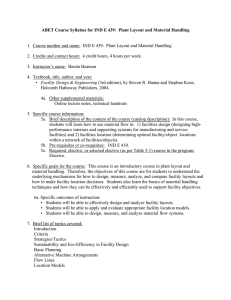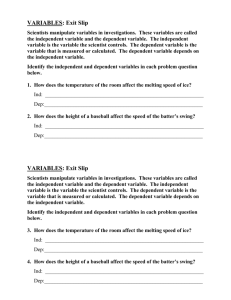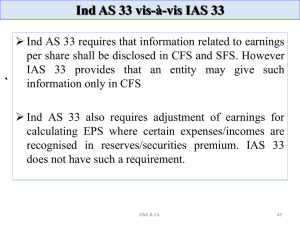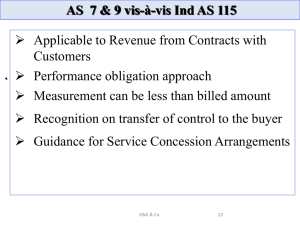Mathematics 666 Homework (due Nov. 9) 35) A. Hulpke
advertisement
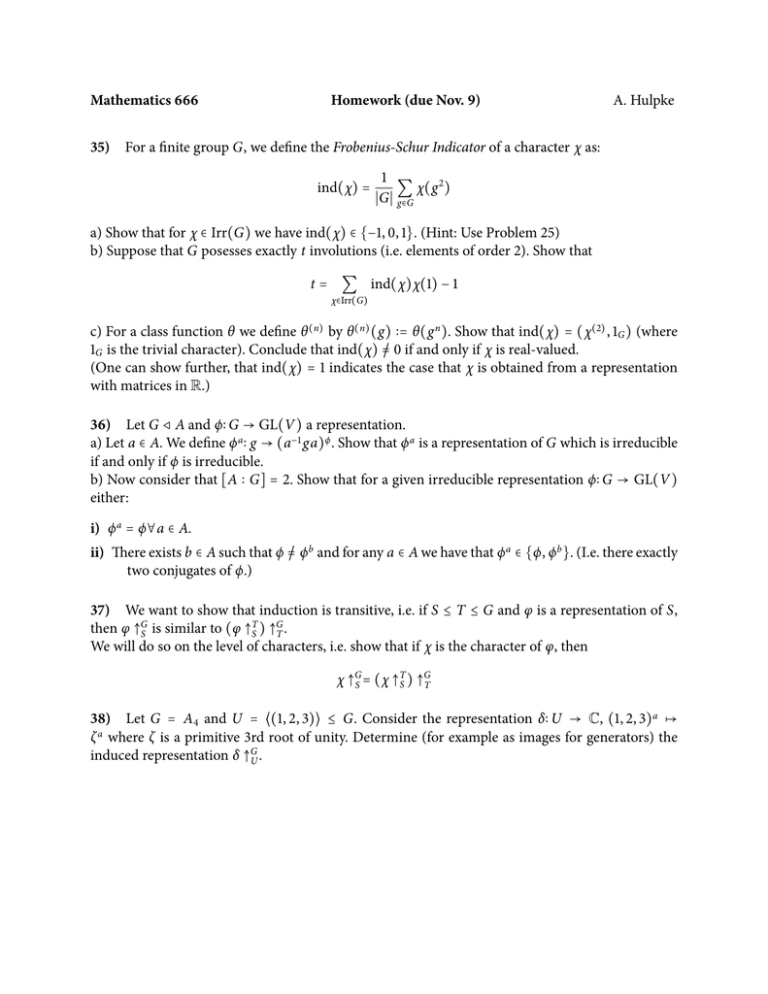
Mathematics 666
Homework (due Nov. 9)
A. Hulpke
35) For a finite group G, we define the Frobenius-Schur Indicator of a character χ as:
ind(χ) =
1
∑ χ(g 2 )
∣G∣ g∈G
a) Show that for χ ∈ Irr(G) we have ind(χ) ∈ {−1, 0, 1}. (Hint: Use Problem 25)
b) Suppose that G posesses exactly t involutions (i.e. elements of order 2). Show that
t = ∑ ind(χ)χ(1) − 1
χ∈Irr(G)
c) For a class function θ we define θ (n) by θ (n) (g) ∶= θ(g n ). Show that ind(χ) = (χ(2) , 1G ) (where
1G is the trivial character). Conclude that ind(χ) =/ 0 if and only if χ is real-valued.
(One can show further, that ind(χ) = 1 indicates the case that χ is obtained from a representation
with matrices in R.)
36) Let G ⊲ A and ϕ∶ G → GL(V ) a representation.
a) Let a ∈ A. We define ϕ a ∶ g → (a −1 ga)ϕ . Show that ϕ a is a representation of G which is irreducible
if and only if ϕ is irreducible.
b) Now consider that [A ∶ G] = 2. Show that for a given irreducible representation ϕ∶ G → GL(V )
either:
i) ϕ a = ϕ∀a ∈ A.
ii) There exists b ∈ A such that ϕ =/ ϕb and for any a ∈ A we have that ϕ a ∈ {ϕ, ϕb }. (I.e. there exactly
two conjugates of ϕ.)
37) We want to show that induction is transitive, i.e. if S ≤ T ≤ G and φ is a representation of S,
then φ ↑GS is similar to (φ ↑TS ) ↑GT .
We will do so on the level of characters, i.e. show that if χ is the character of φ, then
χ ↑GS = (χ ↑TS ) ↑GT
38) Let G = A4 and U = ⟨(1, 2, 3)⟩ ≤ G. Consider the representation δ∶ U → C, (1, 2, 3)a ↦
ζ a where ζ is a primitive 3rd root of unity. Determine (for example as images for generators) the
induced representation δ ↑GU .
39) The benzene molecule is a planar ring of 6 carbon molecules with
attached hydrogen molecules. (The carbon molecules have 3 double
binds in common, but these are not localized. For purposes of symmetry
we may assume that a 60 degree rotation is possible.)
a) What is the symmetry group of benzene?
b) Suppose that all vibrations of benzene take place in the plane. Also
assume that the hydrogen molecules are tightly bound to the carbon and
thus consider the hydrogen/carbon pair as one unit. The vibrations of
benzene are thus described by R12 .
Choose coordinates and calculate the character for the action of the
symmetry group on R12 .
c) Express R12 as a direct sum of homogeneous components and deduce
a set of normal modes for benzene.
